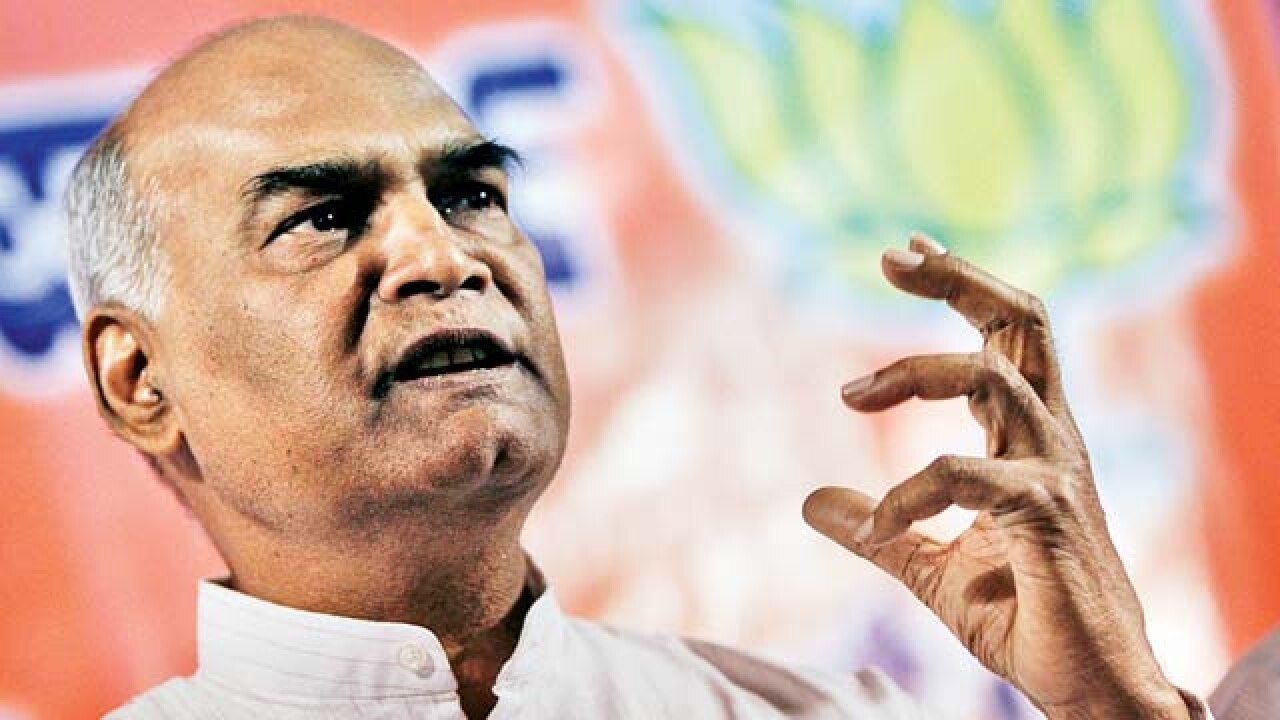
Political pundits have been engrossed, ever since Ram Nath Kovind’s name was announced as the NDA presidential candidate on June 19, in discussing and deciphering its implications. Whatever their disagreements and divergences, one thing is clear. The presidential candidate “coup,” for it is nothing short of that, is yet another proof of the political astuteness of the Modi-Shah combine. Kovind’s candidature will prove a milestone not only in politics, but also in the Hindutva-led rearrangement of the meaning of India.
First of all, its political implications should be obvious. The BJP mandarins, led by the Modi-Shah duo, have recognised that the Hindi heartland, namely UP and Bihar, are key to their remaining in power. UP is already, so to speak, re-conquered; the BJP, under the redoubtable Yogi Adityanath, rules once again after a gap of 15 long and lonely years. What are the future threats to the BJP in UP? Of course the Samajwadi Party, though much weakened by the family-feud in the Yaduvansh of “Netaji” Mulayam Singh. The other threat, unsurprisingly, is the Bahujan Samaj Party led by “Behenji” Mayawati. The BSP, identified closely with the interests of the scheduled castes, is a regional force to reckon with. Kovind’s elevation may be seen as a move to counter that. Himself from a humble farming family in a village near Kanpur, Kovind embodies the rise of the hardworking and humble “nationalist” Dalit. In studied contrast to Mayawati’s aggressive and acerbic persona or even Meira Kumar’s super-privileged pedigree, Kovind is down-to-earth, soft-spoken, but dignified. He is expected to pose a more attractive role model than either.
But let us also not forget that Kovind is the present governor of Bihar. He is seen to be close to Nitish Kumar, JDU head and Chief Minister. As one commentator astutely put it, Kumar’s endorsement of Kovind is a move away from the Lalu-led RJD: saying yes to Kovind is tantamount to saying no to Lalu. How will Kumar, who has artfully retained the chief ministerial gaddi, reinvent himself to stay at the centre of Bihar politics? This remains to be seen, but the BJP, by choosing Kovind, has also made it clear that it may have lost the state to the “Munna”-Lalu mahagathbandhan in November 2015, but it hasn’t given up. That is what Kovind’s nomination and Kumar’s support unmistakably signal. In the coming months, we might expect a significant realignment. This shows political sagacity on both sides: Kumar, once touted as the alternative to Modi has eaten humble pie; BJP, too, clearly prefers him to Lalu.
Since we, as a people, are politically-obsessed, there will many more such analyses as have been just offered. But the real weight of Kovind’s anointing lies elsewhere. Kovind is a nationalist Dalit. For decades, this seemed like some sort of freak or oxymoron. The dominant Dalit narrative was overwhelmingly anti-something: anti-Hindu, anti-Brahmin, anti-savarna, anti-state, anti-Centre, anti-tradition, anti-“India” even. Ambedkarites had appropriated Babasaheb’s legacy to their own ends, often ignoring whatever didn’t fit. Of course, Dr Ambedkar was one of the harshest critics of the caste system. Yet who can forget his offer to Hindus at the end of Annihilation of Caste: “even when I am gone out of your fold, I will watch your movement with active sympathy, and you will have my assistance for what it may be worth. Yours is a national cause.” In matters not only of social reform, but also of national interest, there was none second to Ambedkar. This is something that many Ambedkarites would prefer to overlook.
Kovind, an RSS Dalit, presents a counter-narrative to what has been fostered not only by Ambedkarites, but Marxists. The latter, at least in India, never attack any religious practice other than that of Hindus. They have worked hard, in cahoots with the Congress, against any reintegration of Dalits with Hindu society. The fear was the consolidation of the Hindu vote-bank, something every Congress leader, from Jawaharlal Nehru onwards, wished to avert. Therefore, as long as the Congress was in power, there were rewards aplenty for being anti-Hindu, especially for the wronged and dispossessed. But now the clear message is that reintegration, not disintegration, will be rewarded, even with the very Presidentship of India. To be a Dalit who is also a proud Hindu will have a new cache in the post-Kovind era.
Finally, Kovind, like his Dalit predecessor, KR Narayanan, and, indeed, Ambedkar himself, represents the recognition and triumph of competence and capability over agitation and entitlement. One back-handed, if come-too-lately acknowledgement of this, is the Congress’s nomination of Meira Kumar, daughter of Jagjivan Ram, as its presidential nominee. Also a scheduled caste person, she was an IFS officer, who also served as India’s Speaker. Both candidates affirm that in today’s India, upward mobility is guaranteed to the hardworking and deserving, regardless of caste, class, or, ideally, religion. This is the underlying message, as a star BJP functionary put it, of “the One Nation One People ideology of the BJP and its parivar.”
As to Prime Minister Narendra Modi himself, no one can now accuse him or his government of ignoring the downtrodden and depressed sections of Indian society. He will be seen as the champion of their interests, while his government’s Mahatma Gandhi-Deen Dayal Upadhyaya inspired antodaya creed will have a visible symbol in the 340-room presidential palace at the heart of Lutyens’ Delhi. In a land when symbols are more powerful than reality, Kovind’s imminent Presidency cannot be brushed aside lightly..
The author is a poet and professor at JNU